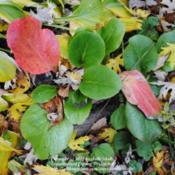March is the start of the busy honey season for beekeepers in the warmer climates. The race is on to keep empty supers added to the hives so the bees will have plenty of room to store their bounty.
March brings us blossoms to  enjoy and brings to honey bees plenty of food to plunder. These plants are on the honey bees' list:
enjoy and brings to honey bees plenty of food to plunder. These plants are on the honey bees' list:
Domestic Apple - Nectar
Alfalfa - Nectar, Pollen and Honeydew
Berlandier Acacia - Nectar
Bloodroot - Pollen
Border Forsythia - Nectar and Pollen
Bur Clover - Nectar
Bush Chinquapin - Nectar
California Barberry - Ne ctar
ctar
Cherry Plum - Nectar and Pollen
Clove Currant - Nectar, Pollen and Honeydew
Common Hyacinth - Nectar
Flowering Cherry - Nectar and Pollen
Flowering Quince - Nectar and Pollen
Gallberry - Nectar
Grape Hyacinth - Nectar and Pollen
Japanese Skimmia - Nectar and Pollen
Kabschia Saxifraga - Nectar and Pollen
Mountain Rockcress - Nectar and Pollen
Peach - Nectar and Pollen
Pipsqueak - Pollen
Poppy Anemone - Pollen 
Rock Cress - Nectar and Pollen
Sargent’s Cherry - Nectar and Pollen
Tulip Poplar - Pollen and Honeydew
Waterlily Tulip - Pollen
Wild Cherry - Nectar and Pollen
Yoshino Cherry - Nectar and Pollen
March is also swarming season. If hives run out of room to hold all the bees plus the honey and pollen stores, the bees are going to split in half to start a new colony somewhere.
That's good if your goal is to add more hives to the beeyard; not so good if your goal is a great honey season. For the first goal you need to have empty hives ready to put the swarms in. For the second goal you better keep those extra supers added or do a split. Bees that set up new colonies are too busy setting up house to collect much extra food. They need all they can collect to feed the babies they are raising to build up to a strong colony.
More March plants can be found listed here.
| Thread Title | Last Reply | Replies |
|---|---|---|
| Thanks by wren | Mar 18, 2012 5:12 PM | 7 |